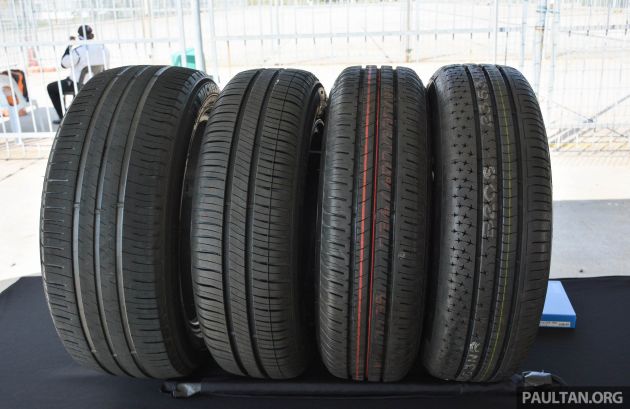When it comes to buying tyres, most customers will undoubtedly have heard that there is an expiry date – from the date of manufacture – to look out for when making a purchase. Some claim that you should avoid tyres that are two or three years old altogether, as these are deemed as “expired” goods.
However, how true is this notion? Well, in this article, we’ll attempt to clear the air on the matter to make sure you are well informed the next time you need to replace one of the most important aspects on your vehicle.
Before proceeding further, let’s talk about how you can determine the date of manufacture of a tyre. On the sidewalls of each tyre, there is a stamp known as the DOT (Department of Transportation) code, which includes a four-digit figure.
This figure is the manufacture date. For example, “5018” means the tyre was manufactured on the 50th week of the year 2018, or mid-December 2018. Should you find a tyre with a DOT code that has just three digits, the tyre is made before the year 2000 (avoid these).
Let’s assume that you need to change the tyres on your car today, and when you head on over to the shop, you are being offered tyres with the DOT code “3917”. Referring to our earlier example, this would mean they were made two years ago, around the end of September 2017. So, does that mean they are “expired?” and are past usable life?
According to the United States Rubber Manufacturers Association (RMA), there is currently no standard to determine the expiry date of tyres, as the damage done to each tyre is based on a number of factors like temperature, load, tyre pressure used, the velocity at which the vehicle is travelling and others.
So, to condemn a new (unsold) tyre as being expired only because it was kept in storage for two years (in this instance) isn’t quite accurate, especially as the tyre hasn’t been subjected to any of the factors mentioned earlier.
Be that as it may, the British Rubber Manufacturers Association (BRMA) does recommend that new tyres that have not been used for six years or more should not be fitted to vehicles, and that all tyres exceeding 10 years from the date of manufacture must be replaced or disposed of.
Adding on to this, Michelin states that tyres are not like fruits that go bad if left untouched. The French tyre manufacturer says the “expiry date” of a tyre should be determined from the day it is fitted on a vehicle, and not just from the data of manufacture only. This is because the tyre is only being “worn out” when fitted, subjecting it to the above-mentioned factors, and not while in storage.
When in storage, the tyre faces zero load, but when fitted to a wheel and subjected to air pressure and the demands of driving – braking and accelerating, high speeds, rough roads, sharp objects, heavy loads, changing weather and temperature conditions – these factors have more of an impact on the tyre. For example, even when a vehicle is stationary, the tyres still have to bear the weight of the vehicle itself.
To verify these claims, Michelin conducting tests in three different countries – Germany, Korea and Saudi Arabia – to prove that a tyre that has been stored for three years is still capable of delivering the same level of performance as one that has been freshly supplied from the factory.
In Saudi Arabia, the company’s testing revealed that tyres that were used for one year performed just as well as a tyre that has been stored and unused for 10 years. Meanwhile, to test the characteristic of the tyre compound, Michelin stored a tyre for 20 years at a constant 40 degrees Celsius to simulate the effects of a tyre that has been used for 40,000 km, and it discovered that the compound deteriorated faster when used rather than one that hasn’t been used and is stored properly.
Over in Korea, the company compared newly manufactured tyres with those that had been stored for three years, subjecting them to a string of high speed and incremental speed tests. In Germany, the same comparison was done, but the focus was on rolling resistance.
The results of these tests in both countries showed that there were negligible differences when it came to performance between a tyre that was newly made and one that had been stored for three years. Even so, Michelin did agree with the BRMA’s standpoint that tyres that are 10 years or older from the date of manufacture must be replaced or disposed of.
So, what’s all this hullabaloo about tyre age then? Well, a recent Facebook post has been circulating around claiming that new tyres being sold by stores that were kept in storage for around two to three years are considered “expired” goods, and one should demand a discount for them.
After taking what was discussed earlier into consideration, do you think this is relevant? Have you ever asked the sundry shop owner for a discount on a loaf of bread that expires in three days compared to one that expires in five days?
The fact of the matter is, you don’t need to worry if the tyre being presented to you has been kept in storage for two or three years because its performance is on par with those that just came out of the factory. If anything, a tyre shop running a promotion to clear out tyres that are two or three years old by selling it a lower price provides a good opportunity for some savings, sans the uneasiness. Following the BRMA guideline, it’d probably be prudent to avoid anything much older than that, even if it can be gotten cheap.
What about used tyres then? Well, we don’t really recommend purchasing such items due to safety concerns, but if you must, pay special attention to the DOT code. Even if the manufacturing date is within reasonable bounds, you have no knowledge of when it was first used by the previous owner, or what the tyre has had to deal with prior, so tread with extreme caution.
In some situations, you might even find a used tyre with quite a bit of tread left on them, but it is a rare occurrence that they have a recent date of manufacture. Additionally, most used tyres are not stored properly by the seller, and could be just tossed into a generic pile and left exposed to the elements for months on end, deteriorating them further.
On a final note, tyres are an important aspect of a car, as those four contact points are what keeps you on the road, so it’s always important to check their condition regularly, including the air pressure and the state of the tread. And when it comes to making the purchase, always buy the best tyres you can afford.
This story is a translation adapted from a post by our sister site paultan.org/BM
Source: Read Full Article





